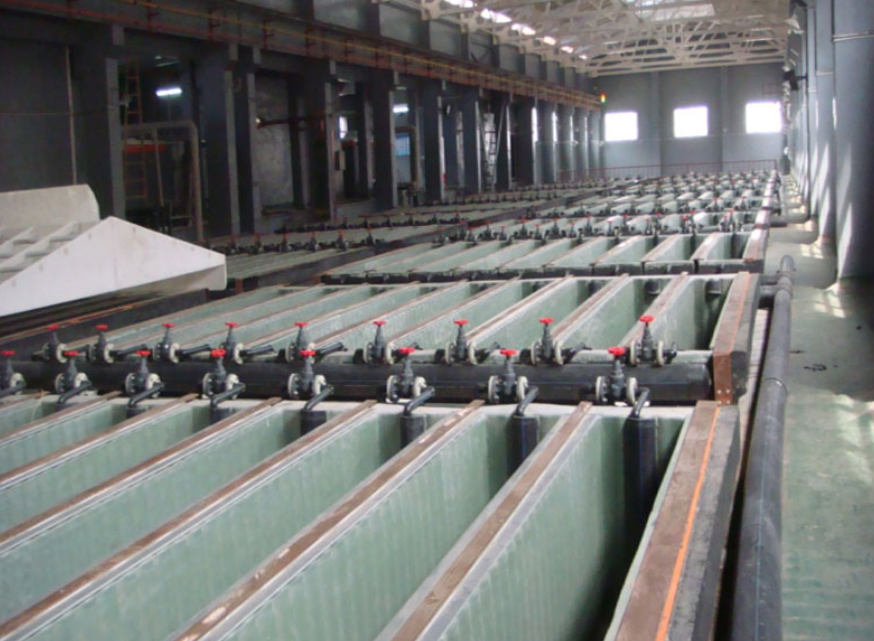As a key link in copper refining, the electrowinning workshop is a sophisticated and collaborative system, mainly composed of five core parts: electrolytic cells, electrodes, power supply system, circulation system, and automated equipment.

The electrolytic cell is the "reaction vessel" for electrodepositing copper, providing a stable space for copper ions to deposit on the electrodes. Its material is typically chosen for its corrosion resistance and good insulation to ensure long-term stable operation. The electrodes are divided into anode and cathode. The anode dissolves during the electrodeposit process, replenishing the solution with metal ions; the cathode, as the carrier for the reduction and deposition of copper ions, directly affects the quality of the copper product.
The power supply system is the "power source" of the electrodeposition process, providing a stable direct current between the electrodes. Precise control of its voltage and current is crucial to electrodeposition efficiency and copper deposition quality; too high or too low a voltage can lead to product defects or increased energy consumption.
The circulation system acts like the "circulatory system" of an electrowinning workshop, responsible for circulating and transporting the electrolyte between the electrolytic cells. It ensures the uniformity of the electrolyte composition, promptly removes the heat and impurities generated during electrowinning, and maintains the stable progress of the electrowinning process.
Automated equipment is the "smart brain" of a modern electrowinning workshop, using sensors and controllers to monitor and adjust various parameters in real time, such as current density, electrolyte temperature, and concentration. This not only improves production efficiency but also ensures the stability of product quality.
In practical applications, these devices work together to efficiently reduce copper ions in copper-containing solutions into high-purity electrolytic copper, which is widely used in industries such as electronics, electrical engineering, and construction, providing an important basic material for modern industrial development.